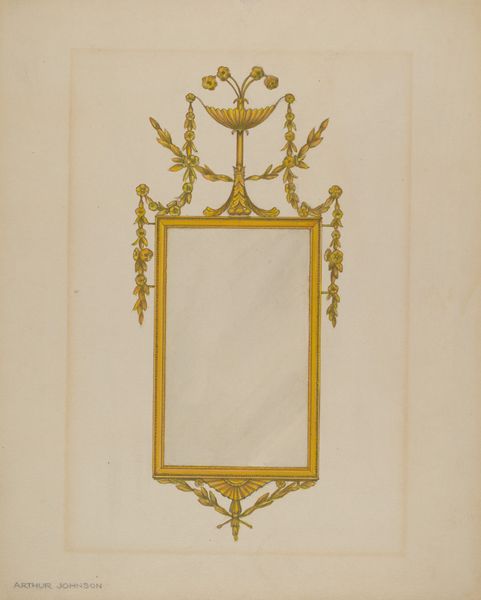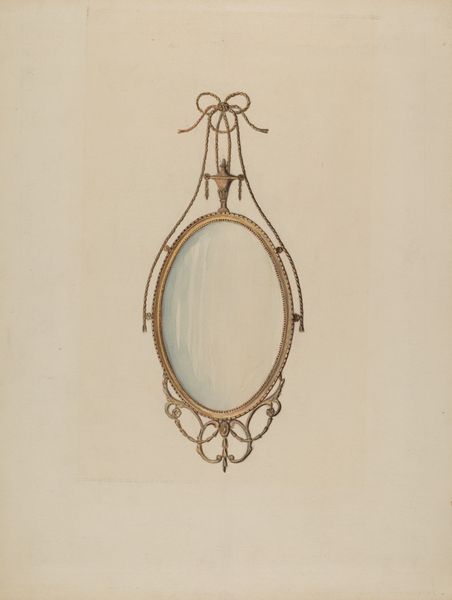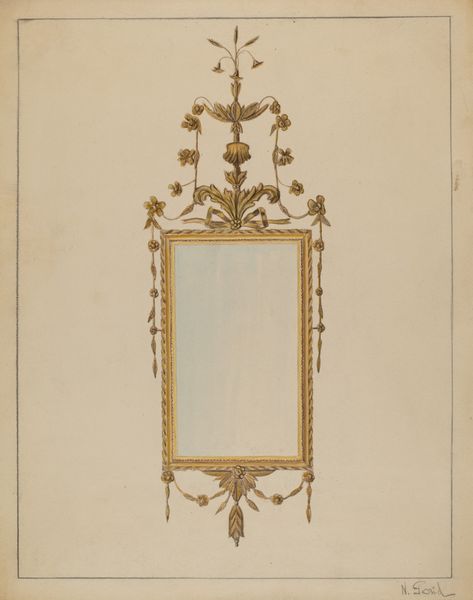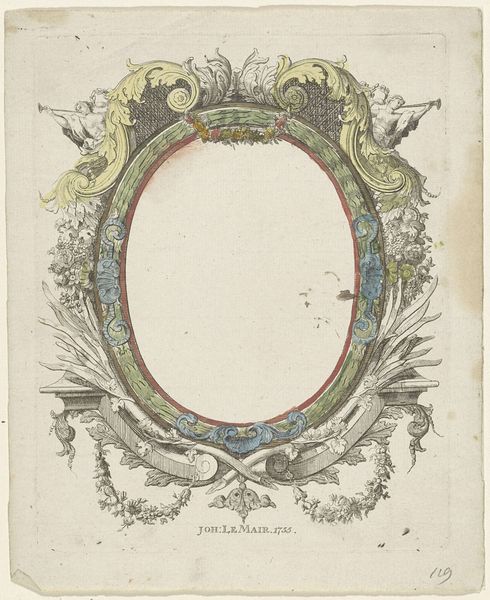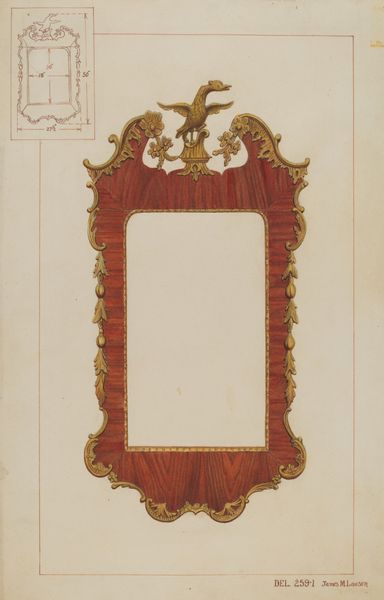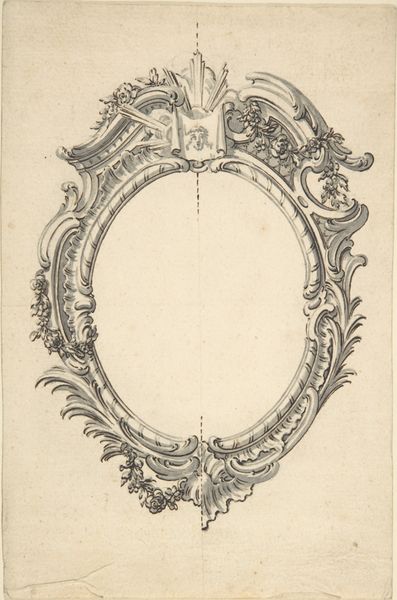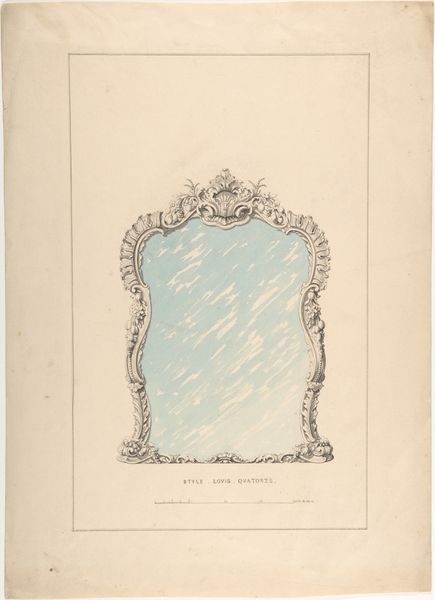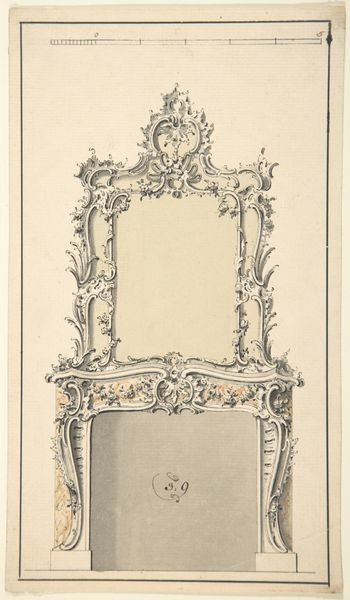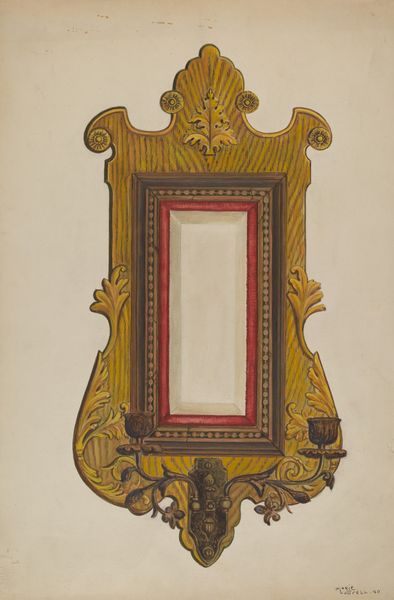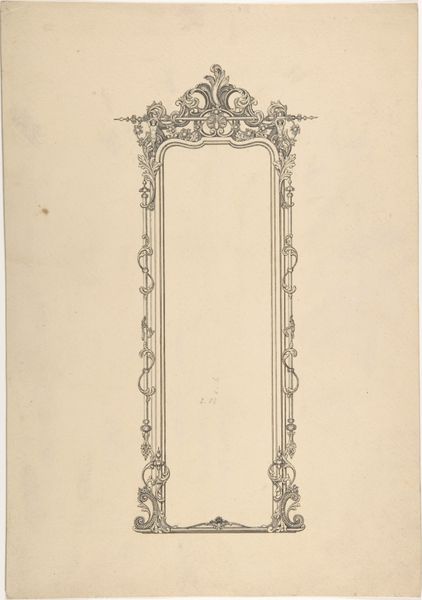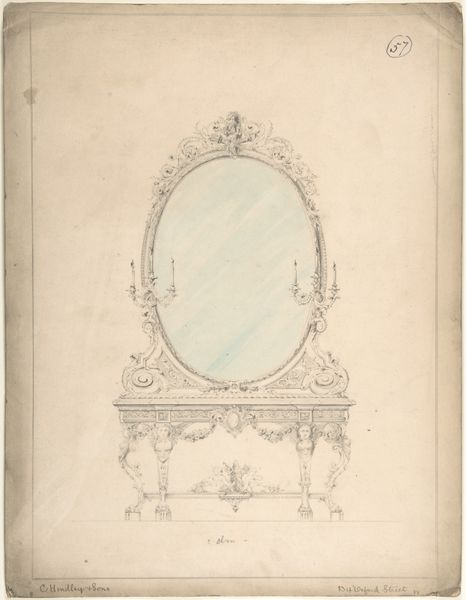
drawing, print, watercolor
#
drawing
#
neoclacissism
#
water colours
# print
#
watercolor
#
decorative-art
Dimensions: sheet: 15 5/8 x 8 1/4 in. (39.7 x 21 cm)
Copyright: Public Domain
Curator: Here we have John Yenn's "Design for an Oval Mirror," dating roughly between 1770 and 1821. It's a mixed media work, incorporating drawing, watercolor, and possibly print techniques, showcasing the decorative arts style strongly associated with Neoclassicism. Editor: My initial reaction is one of understated elegance. The soft palette and refined detailing create a sense of aristocratic restraint. It’s almost a whisper of opulence, rather than an overt display. Curator: I agree, and think that the watercolor medium adds to this subdued feel. We need to remember that these drawings were essentially designs for production; examining the materials and craftsmanship that *would* have been required tells us much about period manufacturing processes and economic factors, and class accessibility to these pieces. Editor: Precisely. Thinking about it as a design piece opens up discussions of labor and the roles of artisans versus the designer, Yenn. Who had access to these beautifully crafted mirrors and what did it mean to own such an object, to literally see oneself reflected in such obvious luxury? I wonder what narratives of identity it served? Curator: The imagery is clearly borrowed from classical antiquity. The head at the top and botanical elements like acanthus leaves used as ornamentation demonstrate an obsession of the elite class to harken back to what they imagined to be the superiority of earlier Greek and Roman states. The materiality further signifies access to global trade networks during the height of empire. Editor: The oval shape, a departure from more rigid geometric forms, also speaks to an era of embracing fluid and gendered aesthetics within aristocratic settings. It prompts one to question the societal function of such embellishment. Curator: Thinking of function reminds me of the economics behind these highly-decorative forms. Craftspeople trained over years to fabricate very precise forms for consumers. It required labor and capital to come together to execute objects such as this and underscores how class divides were enhanced during the Georgian era. Editor: Absolutely. It all circles back to understanding the design not merely as decorative art, but as a powerful symbol imbued with social, political, and economic weight. It speaks volumes about the self-perceptions of those who commissioned and possessed such objects and how it reflects a particular time and place in the world. Curator: In conclusion, viewing this through the lenses of production and materiality allows us to consider craftsmanship, skill, and the larger economy necessary for its existence. Editor: And understanding those mechanics truly reveals that beyond a design for decor, the mirror embodies critical intersections of gender, class, and self-fashioning of the 18th Century elite.
Comments
No comments
Be the first to comment and join the conversation on the ultimate creative platform.
